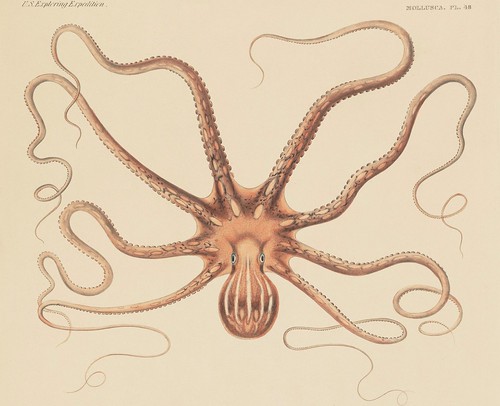

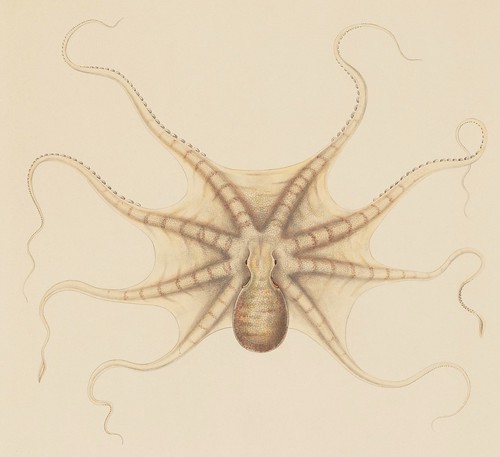
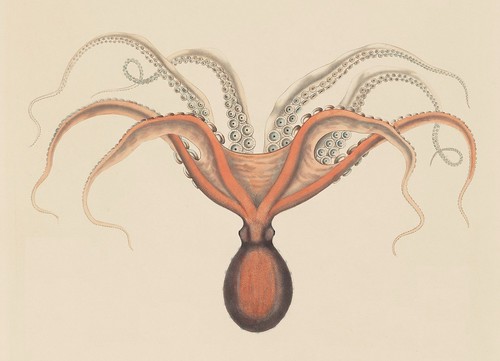
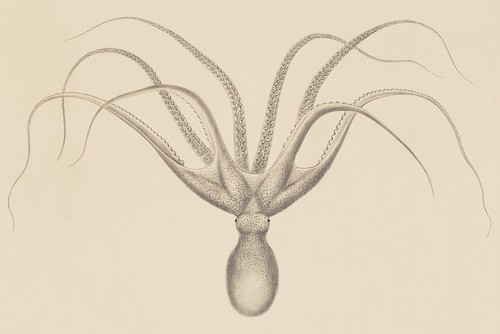
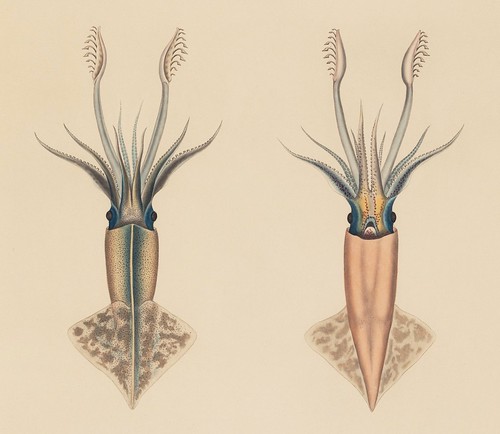
These illustrations are details taken from plates out of 'Molluscs and Shells' (1852-1856) at Botanicus by conchologist, malacologist and physician, Augustus Addison Gould. The book was part of a multi-volume series resulting from the United States Exploring Expedition of 1838-1842.
There can never be too many cephalopods.
Addit: Oops, forgot to say, previously: CEPHALOPODA
No comments:
Post a Comment